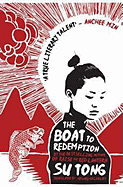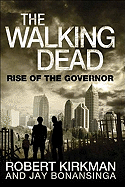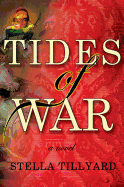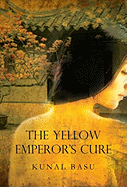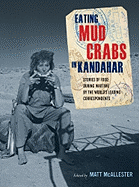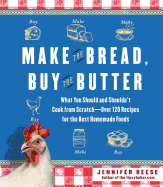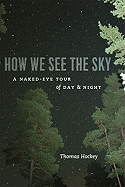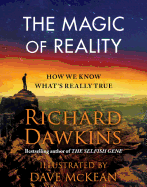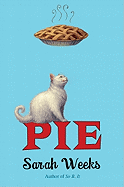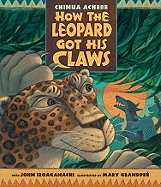The biggest book of the year was published this week. Like one of the subject's own products, it was masterfully timed, packaged and presented--and delivers the goods.  We're talking about Steve Jobs, the biography by Walter Isaacson (Simon & Schuster), who was asked by the Apple co-founder and tech icon to write his life's story. (See our review below.) Uncharacteristically for Jobs, he gave Isaacson unfettered access and free rein. In the end, Jobs did exercise some of his famous micro-managing and penchant for control: although he didn't ask for changes, he reportedly decided on the cover portrait (in black and white).
We're talking about Steve Jobs, the biography by Walter Isaacson (Simon & Schuster), who was asked by the Apple co-founder and tech icon to write his life's story. (See our review below.) Uncharacteristically for Jobs, he gave Isaacson unfettered access and free rein. In the end, Jobs did exercise some of his famous micro-managing and penchant for control: although he didn't ask for changes, he reportedly decided on the cover portrait (in black and white).
The book makes for mesmerizing reading and includes stories from the subject's childhood that everyone can identify with. Our favorite from that period: bored in school, a young Steve Jobs once put up signs for a very unsanctioned "bring your pet to school day."
Isaacson also recounts Jobs's triumphs and temporary setbacks, everything from the original Apple II to his expulsion from Apple to his triumphant return to Apple, right through to the iPhone 5. He also delves into some of the stickier aspects of Jobs's career and his personality. Did he really stiff his co-founder out of puny bonus years ago?
Jobs said that in this book, he wanted to be written about "warts and all." Isaacson proved equal to the task, and, interestingly, this is one of the major attractions of Steve Jobs: the more we learn about Jobs, the more compelling, human, brilliant, flawed, awful and wonderful he becomes.
Although much more time must pass before we can fully understand and measure Steve Jobs's contributions to the world, for the foreseeable future, this is the definitive biography for now. We highly recommend it.
Happy reading!
Ed King
by David Guterson
When a book's title is a character's name and it's as transparent as "King," we know we're about to meet an egotistical, powerful man. If he doesn't appear within the first 60 pages, that heightens the anticipation--what's the connection between an au pair's affair with her boss to somebody named King?
David Guterson masterfully braids the au pair and the boss and Ed King and his family into a novel spanning decades, from the 1960s through a Ray Bradbury-esque 2017, and a few key Pacific Northwest locations, cultivating a sense of impending, doomed intersection among all the strands.
Characters' stories emerge in separate chapters, and the back-and-forth format has a flow--each subject change offers more clues in the drama, hints at how each choice will lead to the unsavory climax. The Oedipal theme, even reset in the high-tech boom of the Silicon Valley and Seattle, is obvious, underscored by Guterson's note to readers that functions like a Greek chorus. The novel's details of time and place are meticulous: fashion, landmarks, pop culture and news headlines confirm the eras, while the near-future years are suitably fantastical. As founder of a multibillion-dollar search-engine corporation--think Microsoft, Apple and Google combined--Ed King's hubris is finally earned, but "Cybil," his programmed assistant, ironically gets the last, tragic, word.
Guterson, best known for his first novel, Snow Falling on Cedars, offers a bold, sweeping story of pride, entitlement, greed and futuristic doom. --Cheryl Krocker McKeon, bookseller
Discover: A sweeping five-decade tale about Ed King, whose brilliance leads to the pinnacle of success before a tragic fall.
The Boat to Redemption
by Su Tong, transl. by Howard Goldblatt
In Mao's China, the 11 barges of the Sunnyside Fleet sail the Golden Sparrow River, each barge manned by a different family. They all join in the region's annual celebration of River Day, marking the glorious martyr's death of Deng Shaoxiang (killed smuggling guns to guerrilla fighters)--after all, the fleet's leader, Ku Wenxuan, is thought to be her son, found in a basket on the river as an infant. Not everyone believes the story, though, and now government investigators have declared him a fraud.
The Boat to Redemption is narrated by Wenxuan's half-mad son, Ku Dongliang, whose life changes when a pale woman and her child, wrapped in an army raincoat, are discovered hiding on a barge. The woman vanishes, possibly into the river in despair, and the boat people are stuck with a motherless little girl on their hands. She grows up to become Dongliang’s obsession, famous for her beauty, and the most popular barber at the People's Barbershop.
Su Tong's unusual tale is as tender and painful and glorious a love story as any reader could wish for, propelled forward by Dongliang's pursuit of the truth behind the many unanswered questions about the lives of those closest to him. By turns wildly funny, starkly sexual and almost existentially tragic, this story of three people who don't know for sure who they are makes for compulsive reading. --Nick DiMartino, Nick’s Picks, University Book Store, Seattle
Discover: A Man Asian Prize-winning story of a boy hopelessly in love with an orphaned beauty, but too shy to act upon his feelings.
The Walking Dead: Rise of the Governor
by Jay Bonansinga and Robert Kirkman
In the world created by Robert Kirkman, The Walking Dead refers not just to the zombies but also some of the still-human survivors. One of the worst villains of the series is Phillip Blake, aka "The Governor," an amoral sociopath who feeds prisoners to zombies for sport, cuts off the hand of protagonist Rick Grimes and violently beats and rapes the heroine, Michonne, in one of the most disturbing story arcs in Kirkman's ongoing series of graphic novels. The Walking Dead: Rise of the Governor provides the backstory, explaining how Blake became capable of such deeds.
This tie-in novel by Kirkman and Jay Bonansinga (The Black Mariah, Twisted, Perfect Victim) works from the storyline established by the graphic novels--as opposed to AMC's television adaptation--to tell the tale of Phillip and Brian Blake, two brothers who survive the zombie apocalypse along with Phillip's daughter, Penny, and Nick, Phillip's best friend. They search for shelter and safety, only to be attacked or forced away from the rare peaceful moments they can find, all of which leads to horrifying losses and physical and mental breakdowns.
Told in the present tense, mainly from Brian and Phillip's perspective, Rise of the Governor rockets along at a breakneck pace, stopping a few times along the way. When the plot slows, characters are given the space they need to breathe and live as real, understandable characters. No one is blameless, and all are coping as best they can in an incredibly brutal world. As the small group of survivors moves from place to place, steadily losing their own humanity, readers find out more and more about how Phillip becomes the face of evil as seen in Kirkman's comics. --Rob LeFebvre, freelance writer and editor
Discover: A remarkable prose tie-in to the award-winning Walking Dead comic book series.
Tides of War
by Stella Tillyard
Stella Tillyard (Aristocrats) enters the realm of historical fiction with a stunning novel set during Britain's Peninsular War of 1807-1814 that positions her as a worthy successor to Alison Weir in the field of historians who have become equally (if not more) popular as novelists. As Tides of War opens, the delightful Harriet Raven relinquishes her husband, Captain James Raven, to the service of Lord Wellington and company, who are headed for Spain. In James's absence, Harriet learns to navigate London society with the help of her friends and acquaintances--including Lady Wellington, who shares Harriet's keen interest in science and innovation and is eager to invest in the development and expansion of that new marvel, gas lighting. Meanwhile, James works to distinguish himself on the Spanish battlefield, encountering the frustrating bureaucratic issues involved in waging war as well as the horrifying violence that results. As the story evolves in the mingled backdrops of London and Spain, compelling tales of intrigue, money, love and infidelity unfold.
Tillyard's intricate cast of fictional characters is seamlessly interwoven with historical figures; together, they cleverly convey the spirit of the time while touching upon most of the war's significant moments. Her elegantly spare prose shifts from the upbeat enthusiasm of London to the sobering austerity of Spain and back again without ever jarring. Fans of historical fiction--most notably Bernard Cornwell's Sharpe series--are sure to enjoy this dramatic, powerfully depicted debut. --Sarah Borders, librarian, Houston Public Library
Discover: An epic story of the Napoleonic War, from the bleak battlefields of Spain to the vibrant London home front.
The Yellow Emperor's Cure
by Kunal Basu
When Antonio Maria, Lisbon's most eligible bachelor, learns that his beloved father is dying of syphilis, he sets off on a mission to find a cure. Chasing rumors of a "Yellow Emperor's Cure," he travels to the Summer Palace in Peking to study under the mysterious Dr. Xu, personal physician to the empress. At the palace, Antonio receives schooling from both the doctor and his alluring assistant, Fumi. As he learns the ways of Nei Ching, he begins to uncover secrets about more than just the pox.
Antonio quickly finds himself surrounded by whispers and plots, rumors and intrigues. As he unlearns his Western ways, he's caught between two sides: the Chinese and the foreigners. With the Boxer Rebellion sweeping over China, he is forced to choose between his inherent desire for knowledge and the very real dangers around him.
Through the journey of Antonio Maria, The Yellow Emperor's Cure takes readers to late 19th-century China, capturing in one man's internal struggle the quintessential struggles of the Age of Empire, in which cultures were routinely subject to the overwhelming power of European "progress." Author Kunal Basu (The Japanese Wife) presents a vivid depiction of historical China, with all of its beauties and flaws, and The Yellow Emperor's Cure is a treat for any lover of historical fiction. --Kerry McHugh, blogger at Entomology of a Bookworm
Discover: A vivid account of one man's efforts to save his father's life, while caught up in the intrigue and dangers of late 19th-century China.
Food & Wine
Eating Mud Crabs in Kandahar: Stories of Food During Wartime by the World's Leading Correspondents
by Matt McAllester, editor
Not all wars, as McAllester notes in his introduction to this collection, are fought over food or food supplies. But food plays a significant role in all conflicts, as people seek to find, control and protect sources of food for themselves, their families and sometimes their armies. By sharing memories of meals eaten with refugees, with soldiers, with friends made in unlikely war-torn places--and in one case, with their captors--the 18 journalists whose stories appear here provide an unusual tour of the wars of our time.
The essays are grouped thematically, but the reporters' locales, experiences and voices bring a variety of courses to the table. Jason Burke watches Benazir Bhutto risk her life to ask the price of oranges in a Pakistani street market. Wendell Steavenson remembers Zaliko, a "one-man NGO" in the Republic of Georgia, giving away food and homemade alcohol to those in need. Scott Anderson recalls drinking his way into the inner circle of an IRA cell in Belfast, while Janine di Giovanni remembers the food--and the friends--she encountered during the siege of Sarajevo in the mid-1990s.
Despite fear for their own safety, these writers cannot escape the essential human need for food nor the equally strong need for companionship. Huddled in a foxhole or around a smoky campfire, they find both--and often a liberal dash of humor and goodwill--in the most unlikely of places. --Katie Noah Gibson, blogger at Cakes, Tea and Dreams
Discover: A collection of memorable meals, as recalled by award-winning war correspondents.
Make the Bread, Buy the Butter: What You Should and Shouldn't Cook from Scratch--over 120 Recipes for the Best Homemade Foods
by Jennifer Reese
Jennifer Reese had always felt at home in the kitchen. As a passionate cook and a working mother, she tried to shop smart, plan healthy meals and make responsible, sustainable choices for her family (which she then wrote about on her blog, The Tipsy Baker). When she lost her job, though, she had a new reason to question her buying and cooking habits. More than ever before, she wondered: How much of what we buy at the supermarket is healthier, cheaper and more delicious when it's made at home? Which items are simply not worth the effort? And do eggs from your own chickens really taste better?
Make the Bread, Buy the Butter is Reese's hilarious but practical account of her quest to find "the sweet spot between buying and making"--from baking her own bread and stirring up her own peanut butter and applesauce to buying chickens, goats and even a hive of bees. She cures her own salmon, fries her own doughnuts, even makes her own hot dogs (though she admits they're totally not worth the bother).
Readers will enjoy Reese's honest, witty take on cooking, canning, gardening, raising animals and completely embarrassing your teenager with your food obsession. Each recipe includes a detailed ingredient list, a "hassle" rating and cost comparisons between the homemade and store-bought versions. Not all the recipes are simple, cheap or easy, but many deliver delicious results--and with most of them, Reese promises, the satisfaction far outweighs the trouble. --Katie Noah Gibson, blogger at Cakes, Tea and Dreams
Discover: A hilarious, practical experiment in making food staples from scratch, with revealing results about what's better--and cheaper--when you make it yourself.
Biography & Memoir
Steve Jobs
by Walter Isaacson
It wasn't just his family Jobs was concerned about; he knew people would be writing about him and his legacy at Apple, and he wanted to make sure his version of events was out there. Yet while Steve Jobs acknowledges its subject was "the greatest business executive of our era," it's far from a straightforward tribute. Isaacson has interviewed people who knew Jobs at every stage of his career, and--well, anyone who's kept an eye on the computer industry already knows he was a volatile leader whose passion for excellence could all too easily flip into abusiveness towards anything he saw as less than excellent. (His stubborn refusal to accept anything but the best persisted even as he clung to life after a difficult transplant surgery, when he tore off an oxygen mask because it was badly designed.) Over the last decade, though, Jobs became--after Bill Gates--the other computer industry executive recognized by people who didn't follow the computer industry, and for those readers Isaacson's revelations about the turmoil of Apple's early years and the detours to NeXT and Pixar before his triumphant return will be even more eye-opening. (The chapter on his working relationship with designer Jony Ive is particularly insanely great.)
Readers who think they knew what Jobs was like, however, still have much to discover. Some of the most engaging passages in Steve Jobs are those in which Isaacson directly engages his subject: "What's on Steve's iPod?" is one example, but there's also the opportunity to wander the streets of Silicon Valley, visiting Jobs's childhood touchstones--or, less idyllically, to push him on the question of whether he really stiffed Steve Wozniak, the co-founder of Apple, on the bonus for a project they did at Atari in 1975, and then to double-check the story with Wozniak and Atari's Nolan Bushnell. Scenes like these, scattered throughout the biography, remind us that Jobs was not just a cultural icon, but a complicated man whose radical transformation of the world came with a profound emotional cost. --Ron Hogan, founder of Beatrice.comDiscover: Isaacson's biography lives up to the hype, showing readers the private turbulence that spurred Jobs to public greatness.
Science
How We See the Sky: A Naked-Eye Tour of Day & Night
by Thomas A. Hockey
Every night, most of us retreat to our homes and stare at bright-as-sun screens, missing the most awe-inspiring show around: the one straight above us.
In How We See the Sky, Thomas Hockey, professor of astronomy at the University of Northern Iowa, encourages us to look anew at the sky, to notice more and to understand more of what we already observe. This isn't just another guide to the night sky; rather, Hockey describes what we can see--night and day--with unaided eyes. This means details, yes, but also history. In fact, his riffles through various eras of human civilization form some of the book’s most compelling passages. He also culls interesting scientific facts (for example, hundreds of years from now, Polaris will no longer be our north star).
Although Hockey aims at general readers, referring to literature and culture, the book's tone at times resembles a high school science text. However, his passion often offsets this, as he continually points up and looks back. When we look at the heavens--watching the same celestial spectacle as people millennia ago did and millennia from now will--we make connections not otherwise possible. "We have a great deal in common with the rest of the universe," Hockey says. "Indeed, we are intimately related to it." Tonight, kill the machines and find a quiet hill. As Hockey shows, our world brightens when we spend time in the dark. --Tom Swift, author of Chief Bender's Burden.
Discover: Thomas Hockey helps readers look anew at the moon, the planets and the stars.
The Magic of Reality: How We Know What's Really True
by Richard Dawkins, illus. by Dave McKean
With The Magic of Reality, Oxford biologist Richard Dawkins (The God Delusion, The Selfish Gene) has written a popular science text that straddles young adult and adult readerships. This delightful work introduces readers to some basic scientific questions--"What is a rainbow?" or "Why do we have night and day, winter and summer?"--but also tackles the cosmological issues of when and how everything began, as well as addressing specifically humanist issues: "What is a miracle?" and "Why do bad things happen?" Most chapters begin with a survey of traditional myths that attempted to answer these questions; in the chapter on earthquakes, for example, Dawson retells the biblical account of Sodom and Gomorrah; the Japanese tale of the great catfish Namazu, who carries the land upon his back and rattles the earth when he flips his tail; and the West African myth that has humankind living in the hair of a giant who occasionally sneezes. His voice in these passages might remind the reader of the gently wry, self-deprecating explanations in Douglas Adams's The Hitchhiker's Guide to the Galaxy or perhaps the quintessentially British modesty of Stephen Fry.
This thoroughly enjoyable book is enhanced by the dazzling illustrations of Dave McKean, who has worked with such authors as Ray Bradbury, Stephen King and Neil Gaiman. As attractive and accessible as The Magic of Reality is, however, this work is not for every reader; those who disagree with humanist atheism are advised to stay away--for Dawkins, all religions with their deities are mere stories we tell ourselves. But for those who want a clear and enjoyable introduction to science, The Magic of Reality is a fine choice. --Judith Hawkins-Tillirson, proprietress, Wyrdhoard Books, and blogger at Still Working for Books
Discover: A superstition-free excursion into all the science you forgot from school days past (or never knew).
Children's & Young Adult
The Chronicles of Harris Burdick: 14 Amazing Authors Tell the Tales
by Chris Van Allsburg, with an introduction by Lemony Snicket
More than 25 years ago, Chris Van Allsburg published the original The Mysteries of Harris Burdick--a set of 14 drawings connected only by their elusive quality and a caption that suggests that each is part of a larger story.
Lemony Snicket, in his introduction to this collection, ups the ante. He suggests that Burdick wrote and distributed these stories among the 14 contributors here. The tales range in tone from funny to creepy to poignant and often blend these qualities. The elegantly designed volume presents each sepia-toned image, and the story follows. Stephen King's "The House on Maple Street" (from his 1993 collection Nightmares and Dreamscapes) appears alongside its inspiration: a house literally blasting off, using its manicured suburban yard as its launchpad.
Jon Scieszka's "Under the Rug" is the first of three stories that reveal how much we use laughter as a release from fear and anxiety. Other stories deliver justice through comeuppance, such as "A Strange Day in July" by Sherman Alexie, in which terrible twins invent a triplet that strikes terror in the hearts of their parents, classmates, teacher--and eventually its siblings. Many of the mysteries here begin with an unrecoverable loss. M.T. Anderson's "Just Desert" will rock your world as surely as he does Alex Lee's on the eve of his 10th birthday.
The stories feel complete, yet unfinished, as if the characters and situations live on without us to witness their continuation. They ask us to consider the mystery, the sense of possibility, as perhaps more alluring than what we know. --Jennifer M. Brown, children’s editor, Shelf Awareness
For more on The Chronicles of Harris Burdick, check out our Maximum Shelf.
Discover: Fourteen haunting stories by as many esteemed authors, inspired by the elusive Harris Burdick’s illustrations
Pie
by Sarah Weeks
If you made the best pies in town, would you give them all away? That's what Alice's Aunt Polly does when she opens her pie shop in the small town of Ipswitch, Penn. And when Aunt Polly dies, she leaves her prized pie crust recipe to her cat!
Aunt Polly, also known as "the Pie Queen of Ipswitch," won the coveted Blueberry Award for pie-making a record 13 times. While her aunt was alive, Alice spent all of her free time in the shop, cracking walnuts and crumbling brown sugar. So when Aunt Polly dies, Alice finds herself in possession of her aunt's much loved but very cranky cat, Lardo--heir to the pie crust recipe. Now all of Ipswitch is trying to find Aunt Polly's recipe in order to become the next Blueberry Award winner. But without a decent piecrust, can anyone in town take home the prize? Bad pies are cooling on every windowsill. When Lardo disappears and the pie shop is ransacked, Alice and her new friend, Charlie, begin investigating the crimes.
In this gentle mystery, false trails and zaniness abound, and friendship and family rule the day. Aunt Polly lives on through her pies, and her wonderful pie recipes (included in the story). Alice puts it best when she sings, "A cat, a key, a clink, a clue,/ a chocolate pie, a friend that's true,/ A mystery that is finally through,/ And now a happy ending, too." This reader will begin by baking the delicious-sounding Lemon Chess Pie, from page 102. --Lynn Becker, host of the monthly online discussion of children's books for SCBWI, Book Talk
Discover: A charming middle-grade mystery that stresses the importance of friendship, family and the goodness of pies.
How the Leopard Got His Claws
by Chinua Achebe with John Iroaganachi, illus. by Mary GrandPre
Achebe's (Things Fall Apart) lengthy folktale (first published in the 1970s) paired Grandpré's new lush illustrations tells of King Leopard and the animals of the forest living in harmony, and the struggle for power that shatters it.
At King Leopard's suggestion, the animals work together to build a beautiful hall as shelter during the rainy season. All of the animals help—except for the dog and the duck. But when the rains hit while the leopard is away, the dog gets flooded out of his cave and turns everyone out of the hall. King Leopard returns, but the dog defeats him in a bloody struggle. The animals desert their kind ruler, and switch allegiance to the dog. Leopard seeks revenge and, armed with newly hewn claws, he ousts the dog and rules the remaining animals through fear. The dog, banished, agrees to become the slave of Man in return for protection: "Today the animals are no longer friends, but enemies." This tale of disingenuous loyalties and rulers who turn from kind to cruel invites closer examination of the importance of social bonds.
Stunning illustrations by Grandpré (the Harry Potter books) bring life to the somber tale with bold use of line and color. Printed borders surround many two-page spreads draw the eye into the action of the pictures. The fighting scenes between leopard and dog, as well as the single image of heartbroken leopard's face, brim with emotion. Achebe's allegorical tale of African struggles teaches as well as engages. Sure to spark discussion. --JoAnn Jonas, public librarian and blogger
Discover: An allegorical folktale that explores living in harmony, living in fear and the price that is paid for the destruction of social bonds.
The Writer's Life
Portrait of the Artist: Carmela Ciuraru
In her new book, Nom de Plume: A (Secret) History of Pseudonyms (Harper), author and journalist Carmela Ciuraru takes a considered and considerate look at writers who have chosen to release works under a pseudonym.
The obvious question, then: Has Ciuraru ever used a pseudonym?
She laughed, and said, "When I was in college, somewhat as a joke, I used to publish poems and stories as 'Carmela Smith.' But when it comes to my work now, I don't feel that anything I publish is scandalous or shameful, so I don't feel the need to use a pen name."
Ciuraru noted that in the stories she chose to showcase in her book, it very often was shame, scandal or even both that led authors to come up with false names. "Historically it's been about those things," she said. "But our culture has really swung in the other direction. People will tell any story now. Personally, I kind of mourn the loss of reticence in culture."
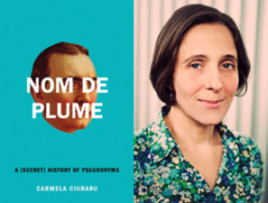 In the 19th century, Ciuraru explained, writers "didn't want it both ways. They weren't trying to draw attention to both their work and their person." For example, Charles Dodgson, also known as Lewis Carroll, was more interested in his work garnering praise than in being recognized on his own.
In the 19th century, Ciuraru explained, writers "didn't want it both ways. They weren't trying to draw attention to both their work and their person." For example, Charles Dodgson, also known as Lewis Carroll, was more interested in his work garnering praise than in being recognized on his own.
One of the reasons that writers choose pseudonyms, Ciuraru believes, after researching stories as multivarious as Lewis Carroll's, Mark Twain's, George Eliot's and George Orwell's, is the freedom it affords. "A nom de plume expresses one part of you. These writers realized that we all have so many facets, so many different parts. You can even be a different person as you go through your day--at your agent's office you're playing a hotshot writer. At the market, you're playing a neighborhood character. When you take your kid to school, you're playing well-informed mom, and so on."
Previously, Ciuraru edited the poetry anthologies First Loves: Poets Introduce the Essential Poems That Captivated and Inspired Them and Solitude Poems, but this is her first time as an author. "My vocation is as a reader of poems. I want my legacy to be 'She did not add to the world's trove of bad poetry!' " That impulse to hold back also informs her new book. "One thing that stuck with me as early as high school was that so many people assume the 'I' of a poem is the poet herself, and it's not. It's a persona. Karen von Blixen, who wrote as Isak Dinesen, said she took a nom de plume 'so I didn't have to answer stupid questions.' This book is partly a love letter from me to literature and its creators, trying to show that I understand their epic struggles."
After delving into the biographies of the writers included in her book, Ciuraru realized how brave they were in seeking to stake out a place for their creative work that was separate from their public lives. "That's why I prefer the term nom de plume," she said. "While pseudonym is a great term, it does technically mean 'fake,' and the authors who used these names most powerfully were anything but fake."
George Eliot, for example, was born Mary Ann Evans, whose self-perceived homely appearance and formidable intellect led her to prefer living as "George." "It allowed her the freedom she craved and could not access as a woman of her time," Ciuraru explained. "For Eliot, fortunately, that pseudonymous persona was empowering. Other writers experienced it almost to a fault, like the 20th-century Alice Sheldon, whose 'James Tiptree' self was so powerful that without him, she felt dead--and ultimately killed her husband and herself."
Ciuraru also points to George Orwell, who was born the well-to-do Eric Blair, but cast off his name so he could live among and write about the working poor. "Many of these writers were telling a lie so that they could tell the truth. You don't see that with today's writers and pen names. They often hide behind a pen name because they're trying to hide behind a lie, like JT Leroy."
Where writers once used use noms de plume to conceal gender, sexual identity or ethnic origins, today the biggest taboo is money. "Today, shame is not getting a big advance, or not selling rights to a film adaptation," said Ciuraru. "Once upon a time, we didn't put authors into tidy boxes so easily. Something has been lost in the distance we once had from our authors. Now, too many authors want to share a really dramatic personal story and receive the glory for it, too. I'm not sure that's possible."
Is there still a need for pen names? Ciuraru laughs. "I think they still give us a certain kind of power. They're secret, and secrets are fun. They also provide artistic freedom. Think about it: a pseudonym takes you back to childhood, when you could say 'I'm a pony! I'm a lion!' Or even, 'I'm about to write the most important novel of the 21st century!' without censoring yourself."
As for Ciuraru, we'll see what's next. "As I once heard Whiting Award winner Mark Doty say, this writer's life is a lonely process. You win an award, but you still have to go back to your desk the next day and sit down and put pen to paper." --Bethanne Patrick





